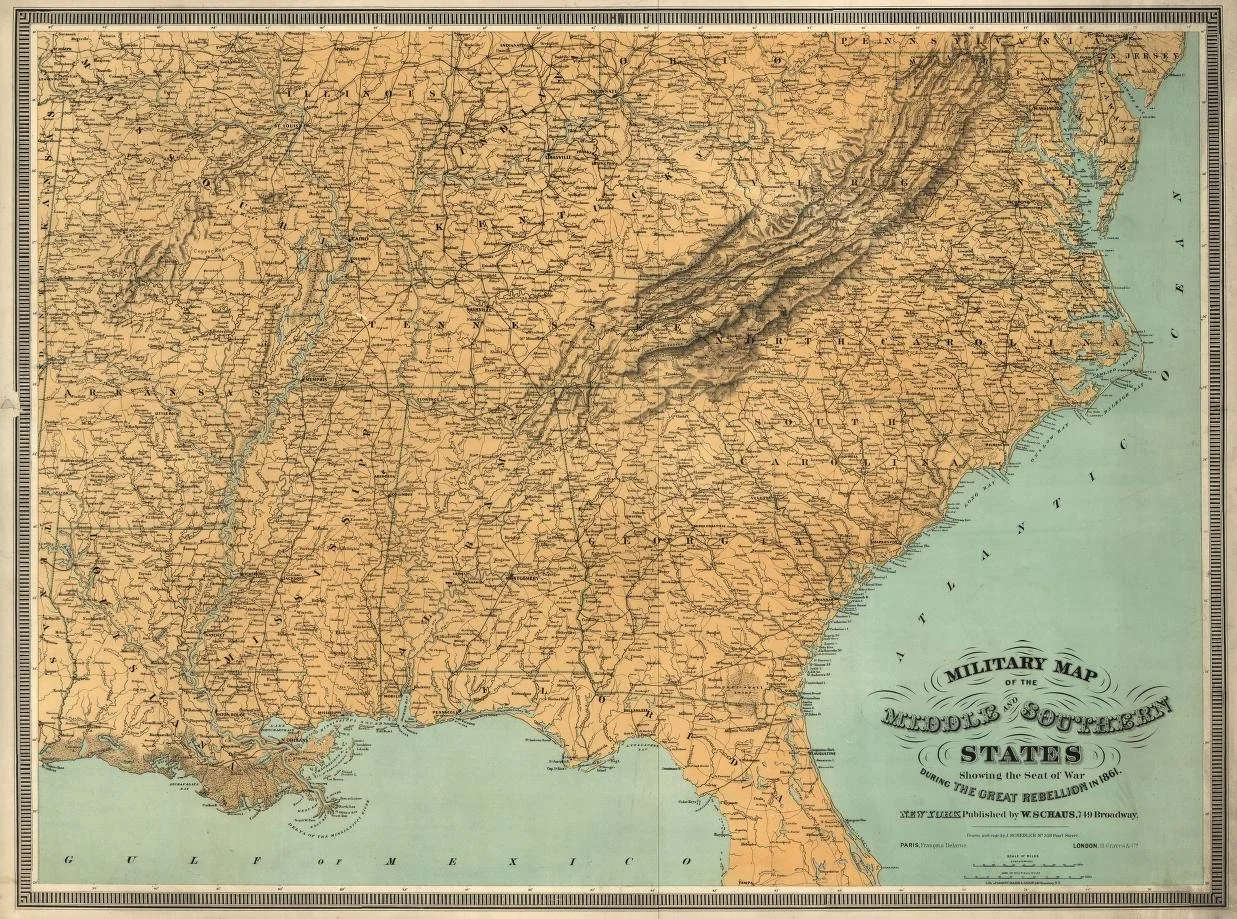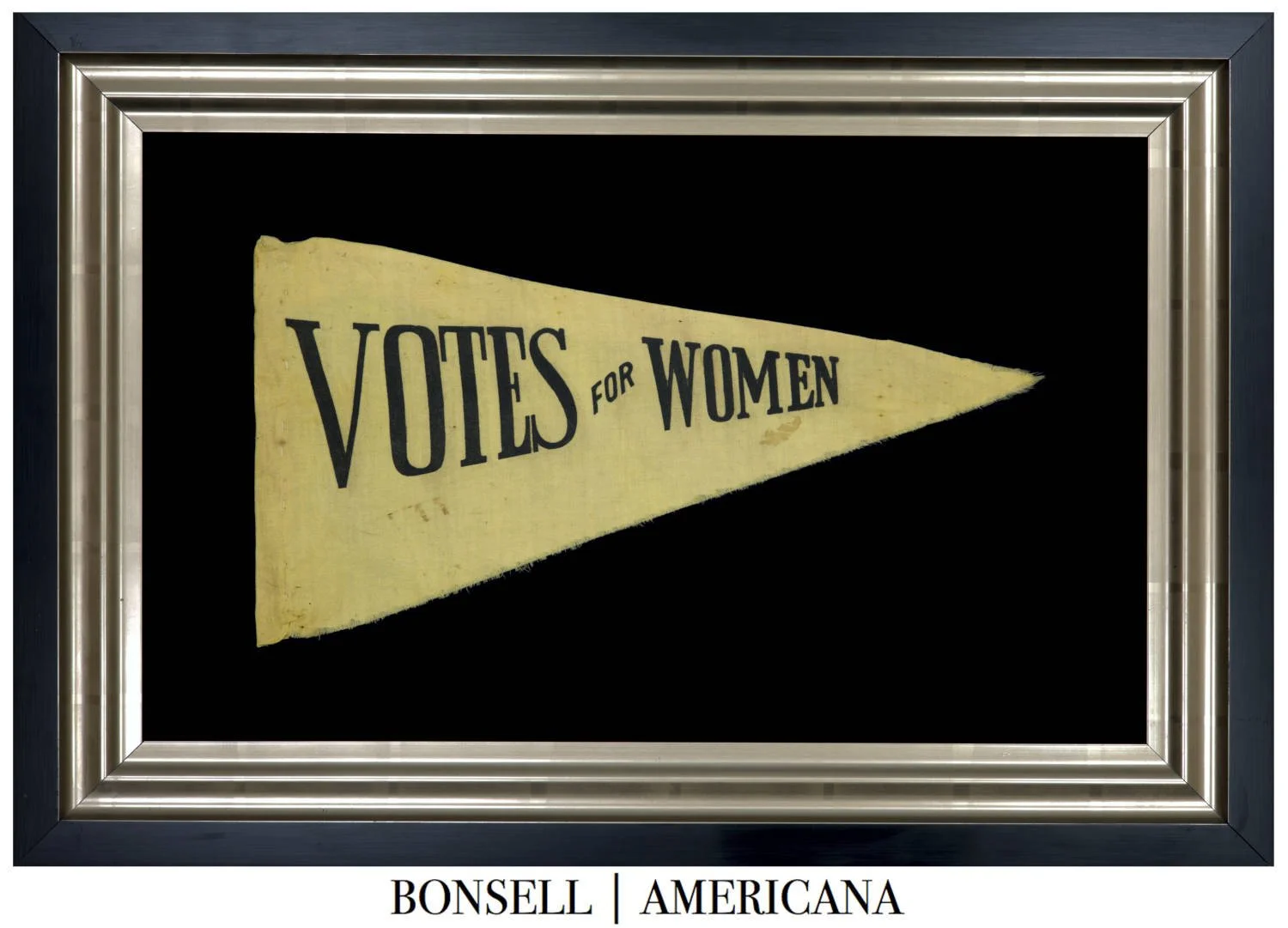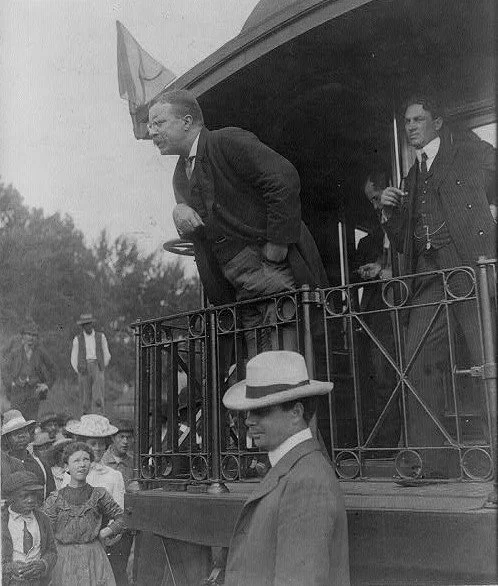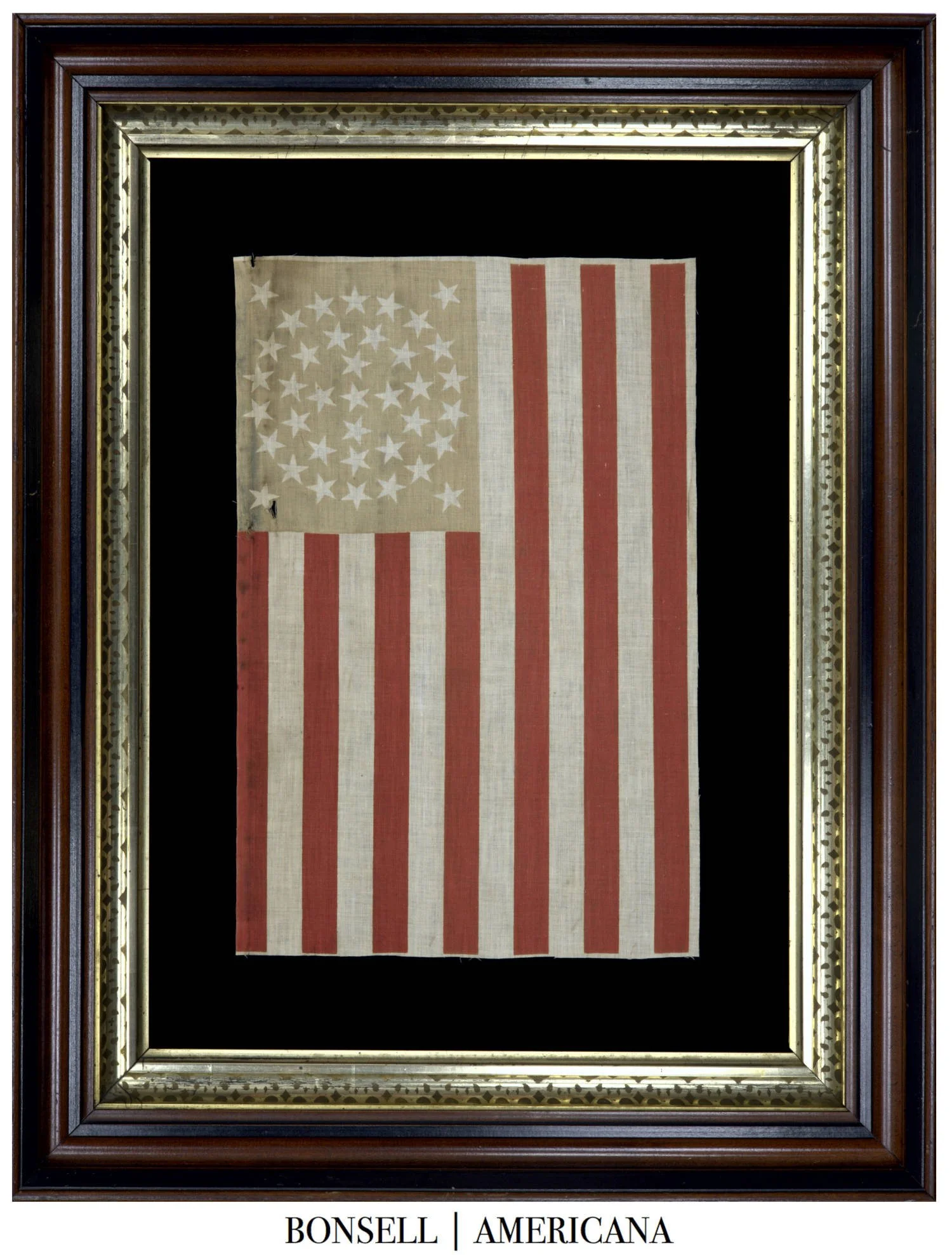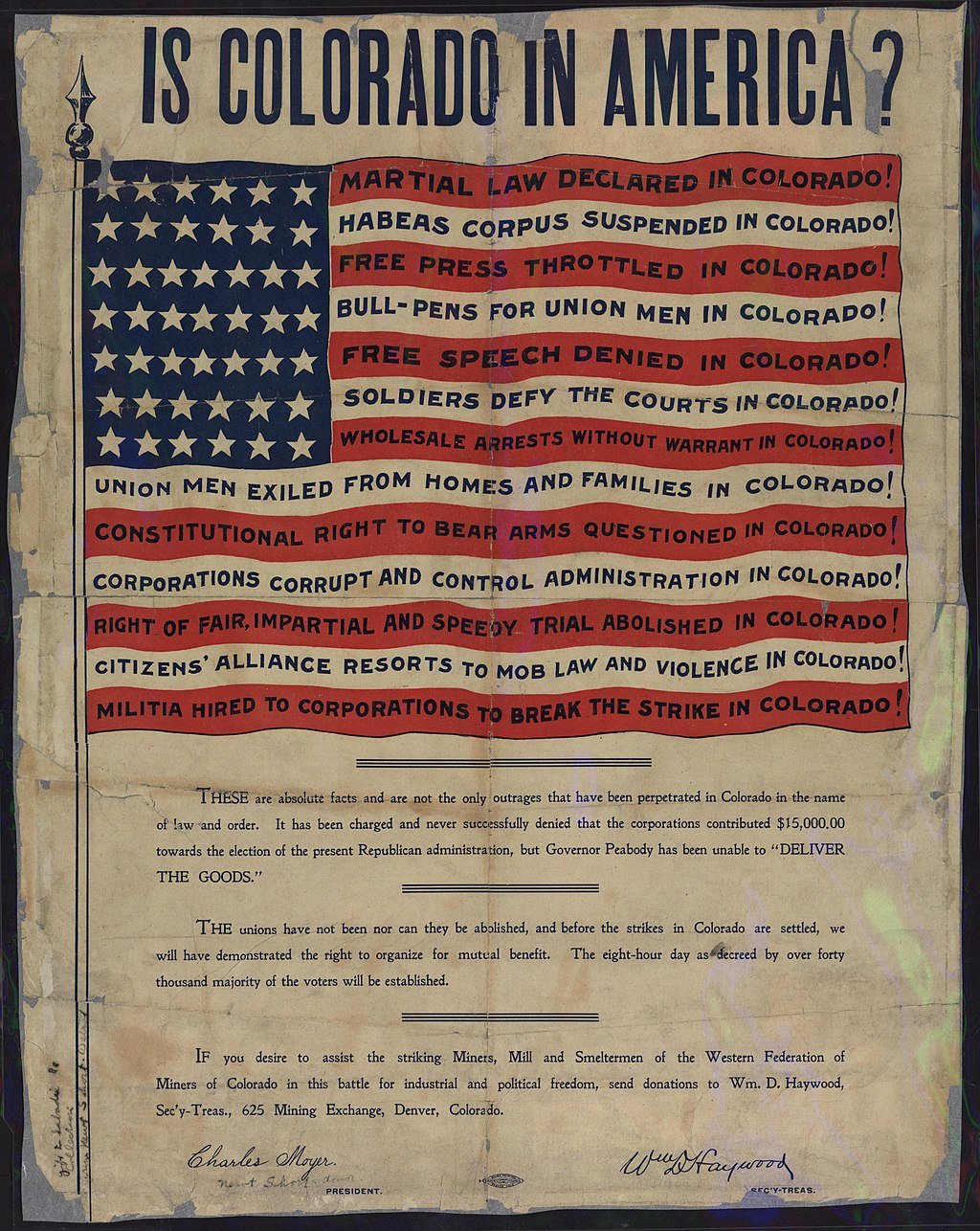Coming Soon: Exceptional 34 Star Antique Flag | A Large Trade Card Made to Promote A.J. Husted's Philadelphia Based Tobacco Business | Kansas Statehood | Circa 1861-1863
Coming Soon: Striking, Large Scale 38 Star Antique Flag with Offset Medallion Pattern | Colorado Statehood | Circa 1876-1889
Biltmore House | Asheville, North Carolina | Circa 1902
This photograph of the Biltmore House in Asheville, North Carolina, was taken around 1902 by William Henry Jackson for the Detroit Publishing Company. The Biltmore House, built by George Washington Vanderbilt II, is the largest privately-owned home in the United States, renowned for its architecture and historical significance.
Coming Soon: Classic Teddy Roosevelt Battle Flag Campaign Bandanna | Circa 1912
Coming Soon: 38 Star Antique Flag with a Soil Enricher Related Overprint | Circa 1876-1889
Military Map of the Middle and Southern States
This 1861 military map shows the Middle and Southern States during the Civil War, highlighting the strategic locations and geography crucial to the conflict. Created by J.H. Colton and published by W. Schaus, the map provides detailed insights into the regions involved in the war, including transportation routes and significant cities.
Coming Soon: Vintage John F. Kennedy Memorial Pennant | Circa 1963
Attractive Antique Votes for Women Pennant | Circa 1910-1920
Coming Soon: 34 Star Antique Flag Cover with an Outstanding Medallion Configuration | Kansas Statehood | Circa 1861-1863
New York City Garbage Strike | Circa 1911
A photograph from the New York City garbage strike, which took place in November of 1911. This image captures the scene during the strike when sanitation workers halted garbage collection, leading to significant public health concerns. The strike highlighted the critical role of sanitation workers and brought attention to labor rights issues of the time.
Section of the Original Big Tree | Mammoth Grove in California | Circa 1866
A historical photograph from 1866 of a section of the original Big Tree at Mammoth Grove, Calaveras County. This image shows visitors examining the massive sequoia trunk, highlighting its immense size. The tree, discovered by contract hunter Augustus P. Dowd in 1852, was the first giant sequoia to come to the attention of white Americans. Although Zenas Leonard described what are thought to be Big Trees in his 1839 Narrative, the discovery of this tree is considered the official discovery of the giant sequoia.
The tree was cut down in 1853 by five men under the command of Captain Hanford, using only mining augers, taking about 21 days. A portion of the tree was transported to New York for exhibit, much to the envy of P.T. Barnum, who sought his own Big Tree but had to settle for a coast redwood. After serving briefly as a dance floor, the stump had a domed building built over it, called the Pavilion, with a small section of the trunk remaining next to it.
This photograph provides a glimpse into the early fascination with and exploitation of these natural giants, which are a significant part of California's natural heritage.
Scarce 46 Star Antique US Flag | Made to Celebrate the 100th Anniversary of Abraham Lincoln's Birth | Oklahoma Statehood | Circa 1909
Teddy Roosevelt Whistle Stop Campaign | Circa 1907
A photograph of Teddy Roosevelt during his whistle stop campaign. This image captures the former President speaking to a crowd from the back of a train, a common method of campaigning at the time. Roosevelt's energetic and direct approach to connecting with the public is evident, highlighting his influential role in American politics.
The Great Union Stock Yards of Chicago | Circa 1880
A historical map of "The Great Union Stock Yards of Chicago" from 1880. This detailed illustration shows the layout of one of the most significant livestock markets in American history. The Union Stock Yards were crucial to Chicago's development as a major hub for meatpacking and distribution, reflecting the industrial growth of the era. A clear glimpse into the past, showcasing this important landmark.
Rare 38 Star Antique Flag with a Medallion Star Configuration | Colorado Statehood | Circa 1876-1889
Portrait of President Abraham Lincoln
A timeless portrait of President Abraham Lincoln, capturing the 16th President of the United States in a moment of solemn dignity. Known for leading the nation through the Civil War and working to end slavery, Lincoln's legacy continues to inspire. This historic photograph serves as a powerful reminder of his enduring impact on American history and the values of perseverance and equality he championed.
Is Colorado in America? | Labor Protest Poster from the Early 1900s
A powerful labor protest poster from the early 1900s, raising a poignant question: "Is Colorado in America?" This historic document highlights the extreme measures taken against union workers during the Colorado labor strikes, including martial law, suspension of habeas corpus, and denial of free speech. It serves as a stark reminder of the struggles faced by workers fighting for their rights and the ongoing battle for fair labor practices in American history.
It's Flag Day!
Flag Day in the United States is celebrated annually on June 14th to honor the adoption of the American flag. The day commemorates the resolution passed by the Second Continental Congress on June 14, 1777, which established the design of the flag that has come to symbolize the nation.
The initial design of the flag, known as the "Stars and Stripes," featured 13 stripes, alternating red and white, and 13 stars in a blue field, representing the original 13 colonies. Over the years, the flag evolved as new states were admitted to the Union, adding stars while maintaining the original stripe pattern.
The idea of an annual observance for the flag's adoption date is attributed to several individuals and events throughout the 19th century. One of the earliest recorded celebrations of Flag Day was in 1861, when George Morris of Hartford, Connecticut, organized a gathering to honor the flag. However, it was a Wisconsin school teacher, Bernard J. Cigrand, who is often credited with popularizing the observance. In 1885, Cigrand held a formal celebration at the Stony Hill School in Waubeka, Wisconsin, and continued to advocate for a national Flag Day for many years.
In the late 19th and early 20th centuries, several states and organizations adopted Flag Day observances. The movement gained significant momentum when President Woodrow Wilson issued a proclamation in 1916 officially establishing June 14 as Flag Day. Later, in 1949, President Harry S. Truman signed an Act of Congress designating June 14th of each year as National Flag Day.
Flag Day is not a federal holiday, but it is observed with various ceremonies and events across the country. Schools, communities, and organizations often hold parades, flag-raising ceremonies, and educational programs to honor the flag and reflect on its historical significance.
The photo is of Flag Day at the Post Office Building, on Pennsylvania Avenue, in Washington, D.C., circa 1916. It captures the grandeur and patriotic spirit of a Flag Day celebration in the early 20th century. The building is adorned with numerous American flags, creating a striking display that reflects the national pride and reverence for the flag that has characterized Flag Day observances throughout history. This photo serves as a visual reminder of the enduring importance of the American flag as a symbol of unity, freedom, and the shared values of the nation.
Star-Spangled Banner on Display at the Smithsonian Castle, Washington D.C.
A historical moment captured at the Smithsonian Castle in Washington D.C., showcasing the iconic Star-Spangled Banner. This photograph features the preservation work being done on the massive flag that inspired the national anthem. An extraordinary glimpse into the dedication and effort involved in maintaining a key piece of American history, preserving it for future generations to appreciate and learn from.







